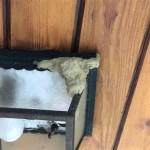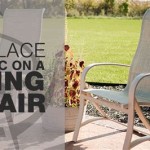How To Protect Painted Outdoor Furniture
Outdoor furniture endures harsh weather conditions, UV exposure, and general wear and tear. Protecting painted outdoor furniture prolongs its lifespan and maintains its aesthetic appeal. Implementing preventative measures and regular maintenance are essential for preserving the furniture's finish and structural integrity.
Choose the Right Paint
Selecting the appropriate paint is the first line of defense against the elements. Exterior-grade paints formulated for wood or metal, depending on the furniture material, offer superior protection. Look for paints specifically designed to resist mildew, UV rays, and moisture. Opting for a paint with a built-in primer can further enhance durability and adhesion.
Prepare the Surface Properly
Thorough surface preparation is crucial for optimal paint adhesion and longevity. Clean the furniture thoroughly to remove dirt, grime, and mildew. A solution of mild detergent and water usually suffices, followed by a thorough rinse. For stubborn mildew, a diluted bleach solution can be used, ensuring proper ventilation and safety precautions. Loose or peeling paint should be scraped away, and the surface sanded smooth. Any rust on metal furniture needs to be removed with a wire brush or sandpaper. Filling any cracks or holes with wood filler or epoxy, as appropriate, creates a smooth, uniform surface for paint application.
Apply the Paint Correctly
Applying the paint in thin, even coats is essential for a professional finish and optimal protection. Multiple thin coats offer better coverage and durability than one thick coat, which is prone to cracking and peeling. Allow each coat to dry completely before applying the next, following the manufacturer's recommended drying times. Using high-quality brushes or rollers designed for the specific paint type ensures a smooth and even application.
Regular Cleaning
Regular cleaning removes dirt and grime that can degrade the paint finish over time. A gentle wash with mild soap and water, followed by a thorough rinse, is typically sufficient. Avoid abrasive cleaners or scrubbing tools that could scratch the paint surface. For stubborn stains, a specialized outdoor furniture cleaner may be necessary, ensuring compatibility with the paint type.
Protective Covers
Utilizing protective covers during periods of inclement weather or extended non-use provides an additional layer of protection. Choose covers made from durable, water-resistant materials, such as polyester or vinyl. Ensure the covers fit snugly to prevent wind from billowing underneath and causing damage. Properly secured covers also deter pests and prevent the accumulation of debris.
Seasonal Storage
Storing furniture in a sheltered location during the off-season, if feasible, significantly extends its life. A garage, shed, or basement provides protection from extreme temperatures, moisture, and sunlight. Before storing, clean and dry the furniture completely to prevent mildew growth. Covering the furniture with breathable storage covers further safeguards against dust and pests.
Periodic Re-application of Sealant or Paint
Applying a sealant or a fresh coat of paint periodically helps to maintain the protective barrier against the elements. The frequency of reapplication depends on the climate, usage, and type of paint. Inspect the furniture regularly for signs of wear, such as fading, chipping, or cracking. Reapplying sealant or paint when necessary prevents further damage and prolongs the furniture's lifespan.
Consider the Furniture's Location
The location of the furniture influences its exposure to the elements. Positioning furniture in a shaded area reduces UV exposure and fading. Avoiding placing furniture directly on the ground, by using furniture risers or a patio surface, minimizes moisture absorption and potential rot. Consider the prevailing wind direction and potential exposure to rain and snow when selecting a location for outdoor furniture.
Inspect and Repair Regularly
Regular inspection allows for early detection and repair of any damage, preventing minor issues from escalating into major problems. Tighten loose screws, repair cracks, and address any signs of rust or decay promptly. This proactive approach maintains the furniture's structural integrity and extends its usable life.

How To Protect Outdoor Wood Furniture Osmo

How To Paint Outdoor Wood Furniture And Make It Last For Years

The Best And Worst Sealers For Painted Furniture

The Best And Worst Sealers For Painted Furniture

Protecting Wooden Garden Furniture Varnish Or Paint Jt Atkinson

How To Paint Metal Patio Furniture

How To Protect Outdoor Furniture Oakville Home Leisure

Outdoor Wood Furniture Protection Do It Best

How To Spray Paint Metal Outdoor Furniture Last A Long Time H2obungalow

How To Refinish Outdoor Furniture The Craftsman Blog
Related Posts







